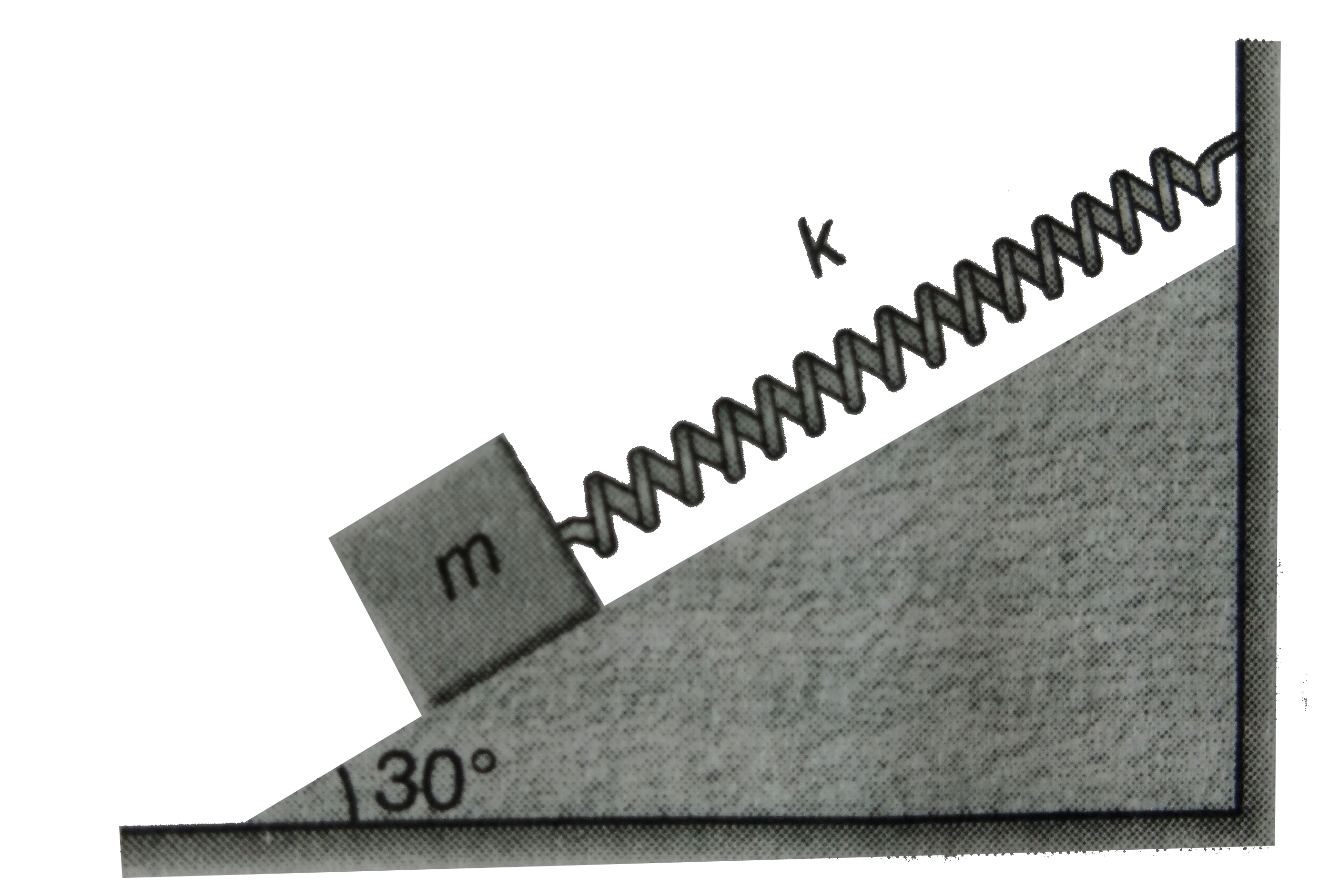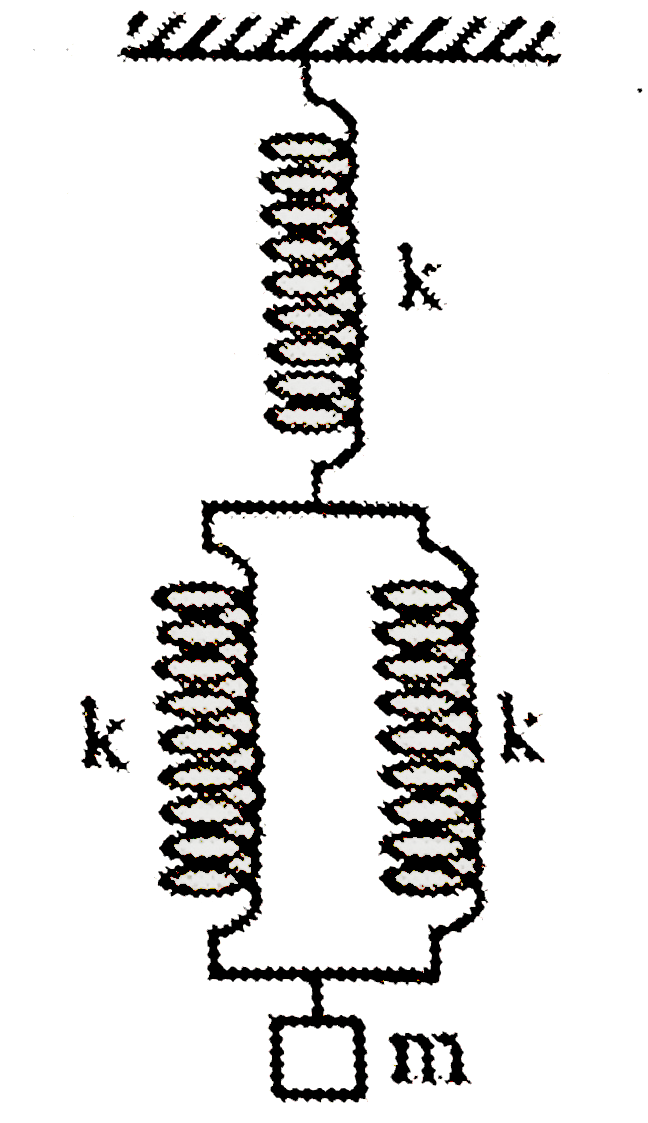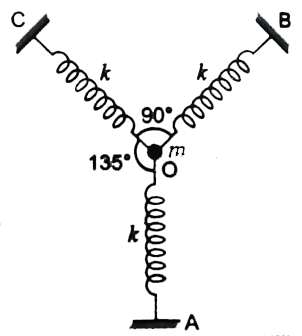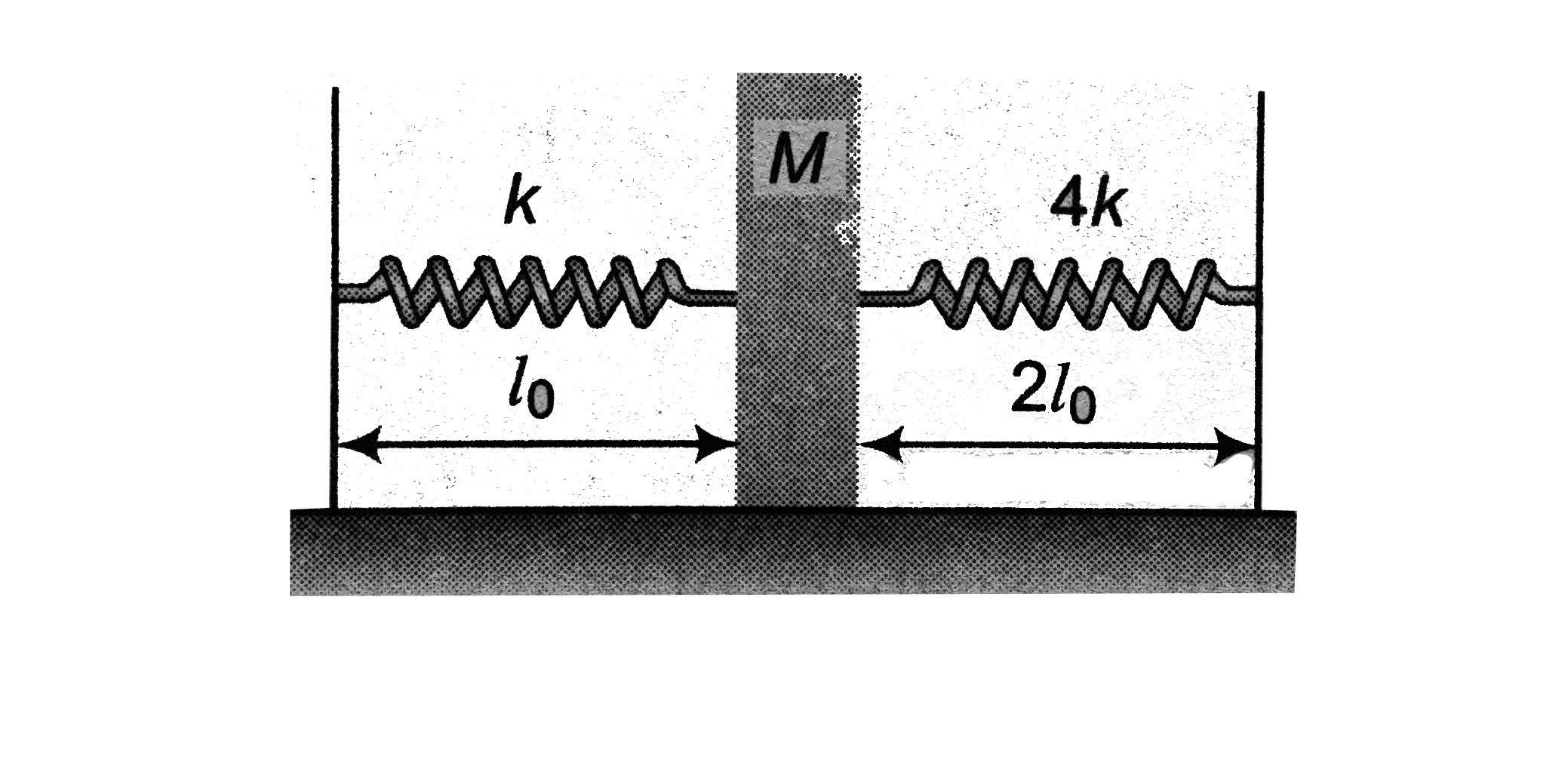A body of mass 0.4 kg is held between two massless springs whose ends are fixed to rigid walls as shown in the figure. The spring constants are 8 N/m and 2 N/m. If the body is displaced along the direction of the lengths of the springs and released, the time period (in second) of the oscillations will be (ignore vertical oscillation, if any )

2π
4π
0.2π
0.4π
The correct Answer is:D
The two springs are in parallel.
∴ The effective spring constant
K=K1+K2=8+2=10N/m
∴T=2π√mKeff=2π√0.410=2π√4100
=2π×210=0.4π
Topper's Solved these Questions
Similar Questions
A block of mass 0.2 kg is attached to a mass less spring of force constant 80 N/m as shown in figure. Find the period of oscillation. Take g=10m/s2. Neglect friction
 View Solution
View SolutionA mass m is attached to the free end of a massless spring of spring constant k with its other end fixed to a rigid support as shown in figure. Find out the time period of the mass, if it is displaced slightly by an amount x downward.
 View Solution
View Solution
Knowledge Check
- Question 1 - Select One
A particle of mass 0.1 kg is held between two rigid supports by two springs of force constant 8Nm−1and2Nm−1. If the particle is displaced along the direction of length of the springs, its frequency of vibration is
A5πHzB8π HzC2πHzD1π Hz - Question 2 - Select One
Two masses m and 2m are attached to two ends of an ideal spring as shown in figure. When thye spring is in the compressed state, the energy of the spring is 60 J, if the spring is released, then at its natural length
 Aenergy of smaller body will be 20 JBenergy of smaller body will be 40 JCenergy of smaller body will be 10 JDenergy of both the bodies will be same
Aenergy of smaller body will be 20 JBenergy of smaller body will be 40 JCenergy of smaller body will be 10 JDenergy of both the bodies will be same - Question 3 - Select One
A particle of mass m is attached to three identical massless springs of spring constant k as shown in the m 135 figure. The time period of vertical oscillation of the particle is
 A2π√mkB2π√m2kC2π√m3kDπ√mk
A2π√mkB2π√m2kC2π√m3kDπ√mk
A body of mass m = 2kg hangs from three springs, each of spring constant 1875 N/m, as shown in the figure. If the mass is slightly displaced and let go, the system will oscillate with time period
 View Solution
View SolutionA body of mass m is suspended from three springs as shown in figure. If mass m is displaced slightly then time period of oscillation is
 View Solution
View SolutionA particle of mass m is attached to three identical springs of spring constant k as shwon in figure. The time period of vertical oscillation of the particle is
 View Solution
View SolutionFigure shows a system consisting of a massless pulley, a spring of force constant k and a block of mass m. If the block is slightly displaced vertically down from is equilibrium position and then released, the period of its vertical oscillation is
 View Solution
View SolutionA block of mass M is kept on a smooth surface and touches the two springs as shown in the figure but not attached to the springs. Initially springs are in their natural length. Now, the block is shifted (l0/2) from the given position in such a way that it compresses a spring and released. The time - period of oscillation of mass will be
 View Solution
View Solution

